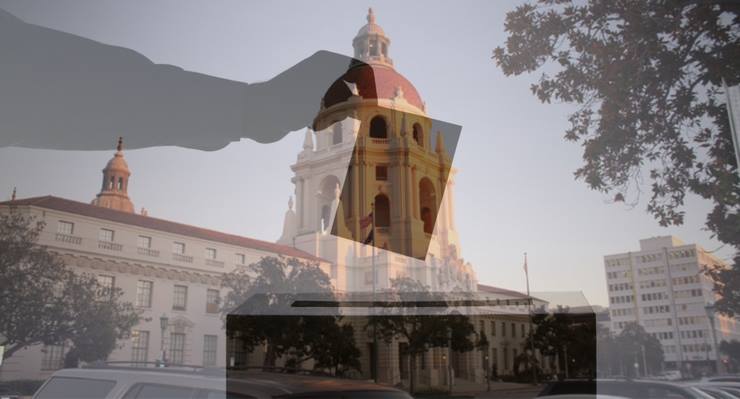
A screen shot shows the LDSD test vehicle after it dropped from the balloon that lifted it to high altitudes and fired its rocket. The picture was taken by a low-resolution camera onboard the vehicle. Earth is the blue-green orb in the background. Image credit: NASA/JPL-Caltech
A news teleconference has been scheduled for tomorrow, June 29, at 7 a.m. HST (10 a.m. PDT, 1 p.m. EDT) to discuss the near-space test flight of NASA’s Low-Density Supersonic Decelerator (LDSD), which occurred today above the U.S. Navy’s Pacific Missile Range Facility in Kauai, Hawaii.
The balloon launch occurred at 8:45 a.m. HST (11:45 a.m. PDT/2:45 p.m. EDT) from the US Navy’s Pacific Missile Range Facility in Kauai, Hawaii. At 11:05 a.m. HST (2:05 p.m. PDT/5:05 p.m. EDT), the test vehicle dropped away from the balloon (as planned), and powered flight began. The balloon and test vehicle were about 120,000 feet over the Pacific Ocean at the time of the drop. The vehicle splashed down in the ocean at approximately 11:35 a.m. HST (2:35 p.m. PDT/5:35 p.m. EDT), after the engineering test flight concluded.
This test was the first of three planned for the LDSD project, developed to evaluate new landing technologies for future Mars missions. While this initial test was designed to determine the flying ability of the vehicle, it also deployed two new landing technologies as a bonus. Those landing technologies will be officially tested in the next two flights, involving clones of the saucer-shaped vehicle.
Initial indications are that the vehicle successfully flew its flight test profile as planned, and deployed the two landing technologies. The first is a doughnut-shaped tube called the Supersonic Inflatable Aerodynamic Decelerator (SIAD), with early indications that it deployed as expected. The second is an enormous parachute (the Supersonic Disk Sail Parachute). Imagery downlinked in real-time from the test vehicle indicates that the parachute did not deploy as expected.
In order to get larger payloads to Mars, and to pave the way for future human explorers, cutting-edge technologies like LDSD are critical. Among other applications, this new space technology will enable delivery of the supplies and materials needed for long-duration missions to the Red Planet.
The upper layers of Earth’s stratosphere are the most similar environment available to match the properties of the thin atmosphere of Mars. The LDSD mission developed this test method to ensure the best prospects for effective testing of the new and improved technologies.
There will be a teleconference for news media tomorrow, June 29, at 7 a.m. HST (10 a.m. PDT/1 pm. EDT). Journalists can participate in the briefing via teleconference by calling 800-369-6087 (International: 1-773-756-0843), with the call leader being Dave Steitz, and the call passcode “LDSD.” Journalists will be required to give their name and affiliation to join the moderated call. Information on how to access a follow-along page with visuals used during the telecon will be available online 15 minutes prior to the initiation of the telecon at the LDSD website:
http://go.usa.gov/kzZQ
Media and the public may listen online at:
http://www.nasa.gov/news/media/newsaudio
NASA’s LDSD program is part of the agency’s Space Technology Mission Directorate, which is innovating, developing, testing and flying hardware for use in NASA’s future missions.













 0 comments
0 comments


